With a number of factors influencing the tyres you should have on your bike, working out what size tyres you need is slightly more complex than it first appears.
Of course, you can always replace like with like, but if you want to try running a different tyre, or maybe just the same tyre in a different width, there are a few things to consider.
In this guide, we'll run through everything you need to know about bike tyre sizes, and delve into the unique specifications of road, mountain, gravel and commuter bike tyre sizes.
Use the links below to jump to the section you need – or read on for our full in-depth guide.
- What defines the size of a bike tyre?
- How do I find the size of my current tyres?
- Road bike tyre sizes
- Mountain bike tyre sizes
- Gravel bike tyre sizes
- Commuting bike tyre sizes
- How does rim width affect tyre size?
What defines the size of a bike tyre?

There are two parameters that define bike tyre size:
- Tyre diameter
- Tyre width
The tyre diameter, or to be more specific the tyre bead diameter, is defined by the size of the wheel that it has to fit on. We'll cover this in more detail.
Tyre width is also a factor to consider. There are more options here, as well as some variability in the width the tyre ends up when it’s mounted on your wheel rim. We'll come on to this.
Tyre diameter and wheel diameter
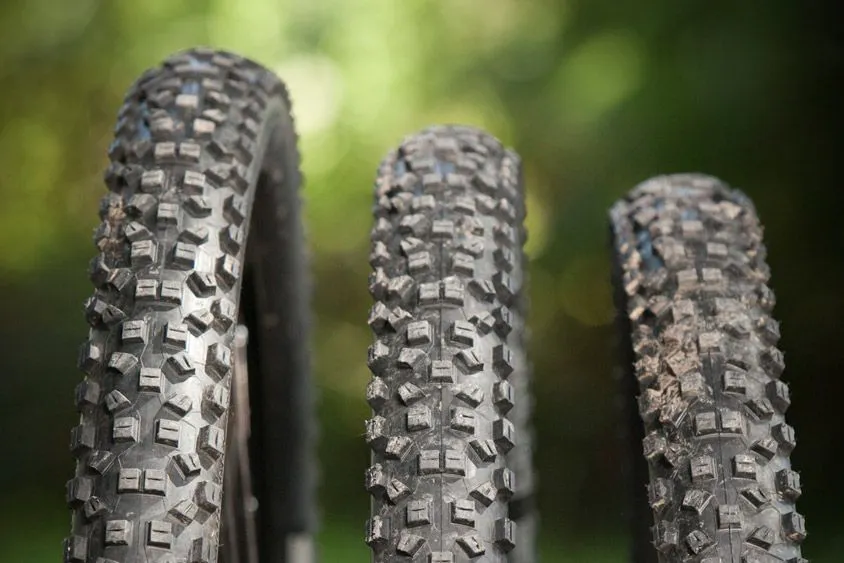
Confusingly, there are multiple ways in which tyre and wheel sizes are designated.
Road bike tyres are typically sized using the traditional European measurement system. Usually, a road bike will have 700c rims and fit 700c tyres.
Mountain bikes, on the other hand, usually have tyre and wheel sizes designated in inches, reflecting the US roots of the sport.
Typical mountain bike wheel sizes and tyre sizes are 29in, 27.5in and, historically, 26in.
29in wheels and tyres have the same bead diameter as 700c; 27.5in is the same diameter as 650b.
The 26in wheels that dominated mountain bikes for years are now more-or-less obsolete.
Like road bikes, gravel bikes have metric-sized wheels, but they tend to be either 700c or 650b.
What about ETRTO tyre sizing?

It gets even more complex, because there’s also an ETRTO sizing that’s typically printed on the sidewalls of tyres, defined by the European Tyre and Rim Technical Organisation.
This is controlled by an ISO international standard and ensures that any tyre of a designated diameter should fit on any rim of the same designated diameter.
The ETRTO number is expressed in millimetres:
- For a 700c or a 29in wheel and tyre, the ETRTO diameter is 622mm
- For a 650b or a 27.5in wheel, the ETRTO diameter is 584mm
- For a 26in wheel, the ETRTO diameter is 559mm
With this in mind, there are actually a limited number of wheel and tyre diameters readily commercially available. A tyre of a specified diameter should fit a rim of the same diameter, though, as we'll come on to, the width of the tyre and rim are also significant factors to consider.
When it comes to tyre size, the wheel/tyre diameter will be combined with the tyre width to give you the full ETRTO number. For example, a 25-622 tyre will have a nominal width of 25mm and a diameter of 622mm (to fit a 700c wheel).
Despite the ETRTO standards outlined above, manufacturing tolerances mean the fit between the tyre and rim can be tighter or looser than expected.
If you need to change a bike tyre fitted with an inner tube, that may just mean the difference between an easy job mounting a tyre and sore thumbs from prising an over-tight tyre onto a rim or off again.
For tubeless tyres, it’s more critical there’s a close fit between the tyre and the rim, particularly for road bike tubeless tyres, where tyre pressures are higher and there’s more risk of a blow-out than with an MTB or gravel bike tyre.
Manufacturers are now making the best tubeless road tyres to much closer tolerances than a few years ago to ensure safety, particularly on the latest hookless rims.
Makers of road bike wheels with hookless rims will often publish a list of tyres recommended for use with their wheels, and it’s best to consult these lists to avoid any mishaps out on the road.
Tyre width
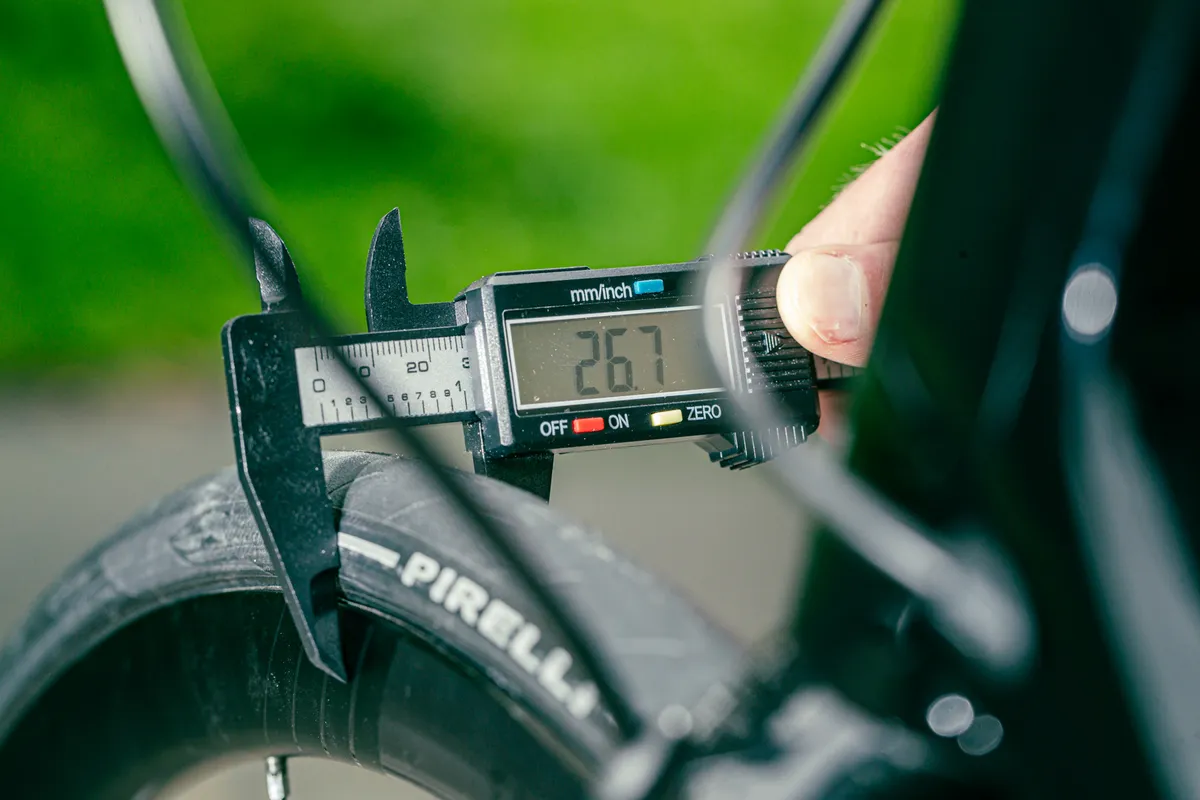
Although there are a limited number of tyre bead diameters to fit discrete wheel sizes, there’s a lot more variation in tyre width.
To start with, mountain bike tyres are a lot wider than road bike tyres. This is one reason why you’ll likely be unable to fit a mountain bike tyre in a road bike frame, although you can in principle fit a mountain bike tyre on a road bike rim.
Road and hybrid tyres are typically sized in millimetres, when it comes to width.
Most gravel bike tyres are also sized in millimetres, although super-wide gravel tyres – akin to mountain bike tyres – may be sized in inches.
Mountain bike tyres are typically sized in inches too.
How do I find the size of my current tyres?

The size of a tyre should be printed on its sidewall.
The definitive tyre size is the ETRTO number, which will be embossed on the sidewall of all tyres.
It consists of a tyre width measurement in millimetres, a dash and then the tyre bead diameter, also in millimetres. For example, 25-622 means the tyre is 25mm wide and will fit a 700c wheel, while 65-584 means the tyre is 65mm wide and will fit a 650b wheel.
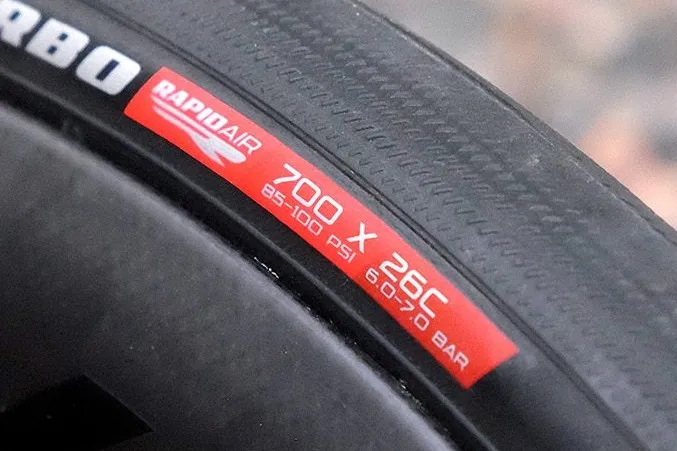
Because ETRTO numbers are not commonly understood, most tyres will have a metric size such as 700c x 25mm, or an imperial size such as 27.5 x 2.60in embossed on them too, sometimes both.
A tyre's size may be printed in black, and quite tricky to read, so outdoors or under a bright light is easiest to pick it out.
Road bike tyre sizes explained

When it comes to choosing the best road bike tyres for you, width is the key factor to consider.
Almost all road bike wheels are 700c (with a beam diameter of 622mm), although some bike brands fit 650b wheels (with a bead diameter of 584mm) to some of their smaller-sized bikes, so they can maintain a similar road bike geometry to larger frame sizes.
In the past, 23mm was the typical width for most road tyres, and some tyres came in a 20mm width or narrower.
Now, 25mm is the narrowest tyre that typically comes fitted to road bikes and many bikes have 28mm tyres, with clearance on some of the latest bikes for 32mm rubber and beyond.
Wider tyres can offer improvements in grip, comfort and rolling resistance. Check the clearance offered by your frame before committing to a wider tyre.
One final point – while millimetres are often used to measure or refer to the width of a road bike tyre, its actual width when inflated will depend on manufacturing tolerances, the rim width and tyre pressure.
As a result, you may see the width referred to in 'c'. For example, 25c instead of 25mm.
Common road bike tyre sizes
Here's an overview of common road bike tyre sizes.
| ETRTO | Dimensions |
|---|---|
| 18–622 | 700×18c |
| 23–622 | 700×23c |
| 25–622 | 700×25c |
| 28–622 | 700×28c |
| 30-622 | 700×30c |
| 32–622 | 700×32c |
Mountain bike tyre sizes explained
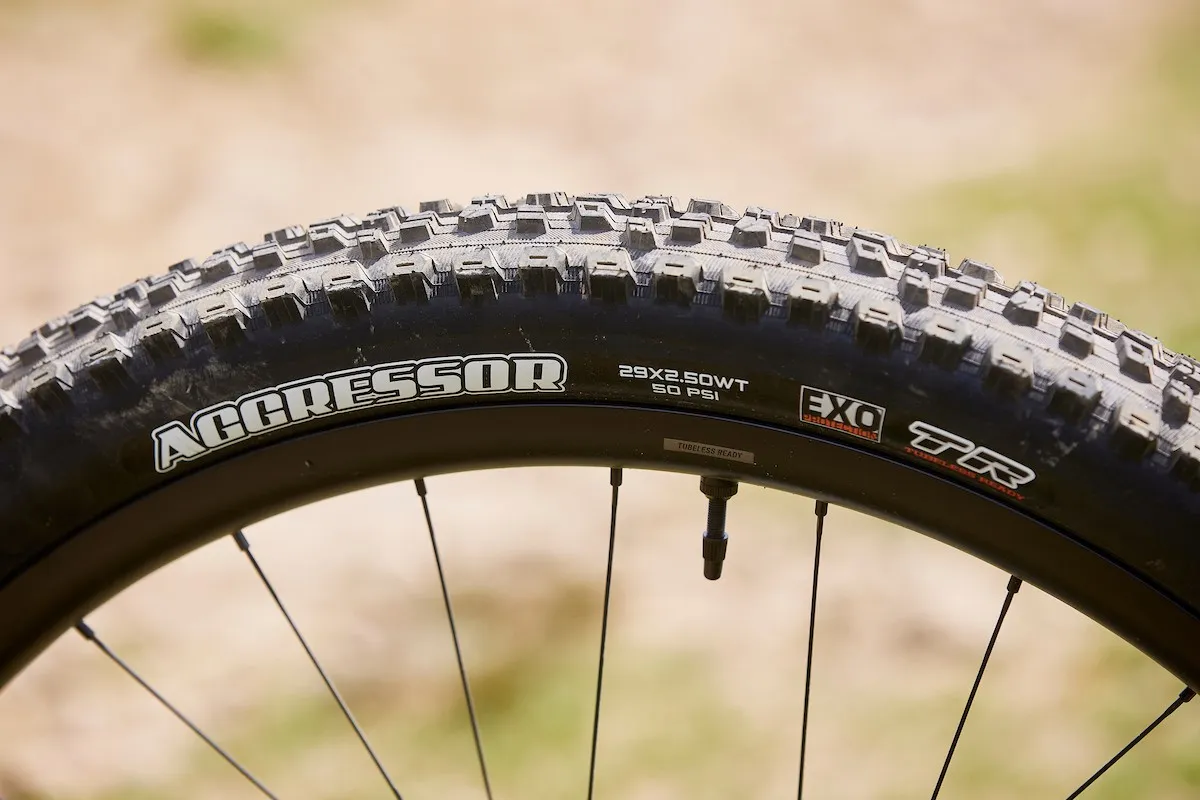
Mountain bikes are now split between 27.5in and 29in wheels. Some mountain bikes have a 29in wheel at the front and a 27.5in wheel at the rear. These bikes are often referred to as mullet bikes, and it's a popular setup on trail bikes and enduro bikes.
Wide rubber rules the day with the best mountain bike tyres. Typical widths range from 2in up to 2.6in, depending on the type of riding the tyre is designed for. Increasingly, wider tyres are also available.
Common mountain bike tyre sizes
Here's an overview of common mountain bike tyre sizes, across 26in, 27.5in and 29in wheel sizes.
| 26in wheels | |
|---|---|
| ETRTO | Dimensions |
| 50-559 | 26x2.0in |
| 54-559 | 26x.2.1in |
| 55-559 | 26x2.2in |
| 58-559 | 26x2.3in |
| 61-559 | 26x2.4in |
| 63-559 | 26x2.5in |
| 66-559 | 26x2.6in |
| 27.5in wheels | |
|---|---|
| ETRTO | Dimensions |
| 50-584 | 27.5x2.0in |
| 54-584 | 27.5x.2.1in |
| 55-584 | 27.5x2.2in |
| 58-584 | 27.5x2.3in |
| 61-584 | 27.5x2.4in |
| 63-584 | 27.5x2.5in |
| 66-584 | 27.5x2.6in |
| 29in wheels | |
|---|---|
| ETRTO | Dimensions |
| 50-622 | 29x2.0in |
| 54-622 | 29x.2.1in |
| 55-622 | 29x2.2in |
| 58-622 | 29x2.3in |
| 61-622 | 29x2.4in |
| 63-622 | 29x2.5in |
| 66-622 | 29x2.6in |
Gravel bike tyre sizes

Choosing the best gravel bike tyres for your machine often means weighing up wheel size, tyre width and tread pattern, to find an option that suits your riding style and the terrain you'll be taking on.
Gravel bikes come with either 700c or 650b wheels and you’ll need to choose a tyre that will fit the wheel size you have on your bike.
700c gravel bike tyres start off at around 32mm wide, although most frames can take wider rubber and many riders now opt for 40mm or 45mm tyres. Gravel tyres can reach around 50mm if they fit in the frame.
Switch to 650b wheels and tyres are usually wider, to add extra air volume and comfort. 650b gravel bike tyres typically start at around 40mm wide and travel up towards 60mm, by which point, inches may be used to express the width.
A 650b wheel with a wider (and hence deeper) tyre will have a similar rolling circumference to a narrower tyre on a 700c rim, so many gravel bike frames can take either wheel size.
While gravel tyres may appear to share much in common with cyclocross tyres, UCI regulations for cyclocross racing dictate that CX tyres must be 33mm or narrower for competition.
Common gravel bike tyre sizes
Here's an overview of common gravel bike tyre sizes for 700c wheels.
| 700C wheels | |
|---|---|
| ETRTO | Dimensions |
| 38-622 | 700x38c |
| 40-622 | 700x40c |
| 42-622 | 700x42c |
| 45-622 | 700x45c |
| 60-622 | 700X50c |
Commuting bike tyre sizes
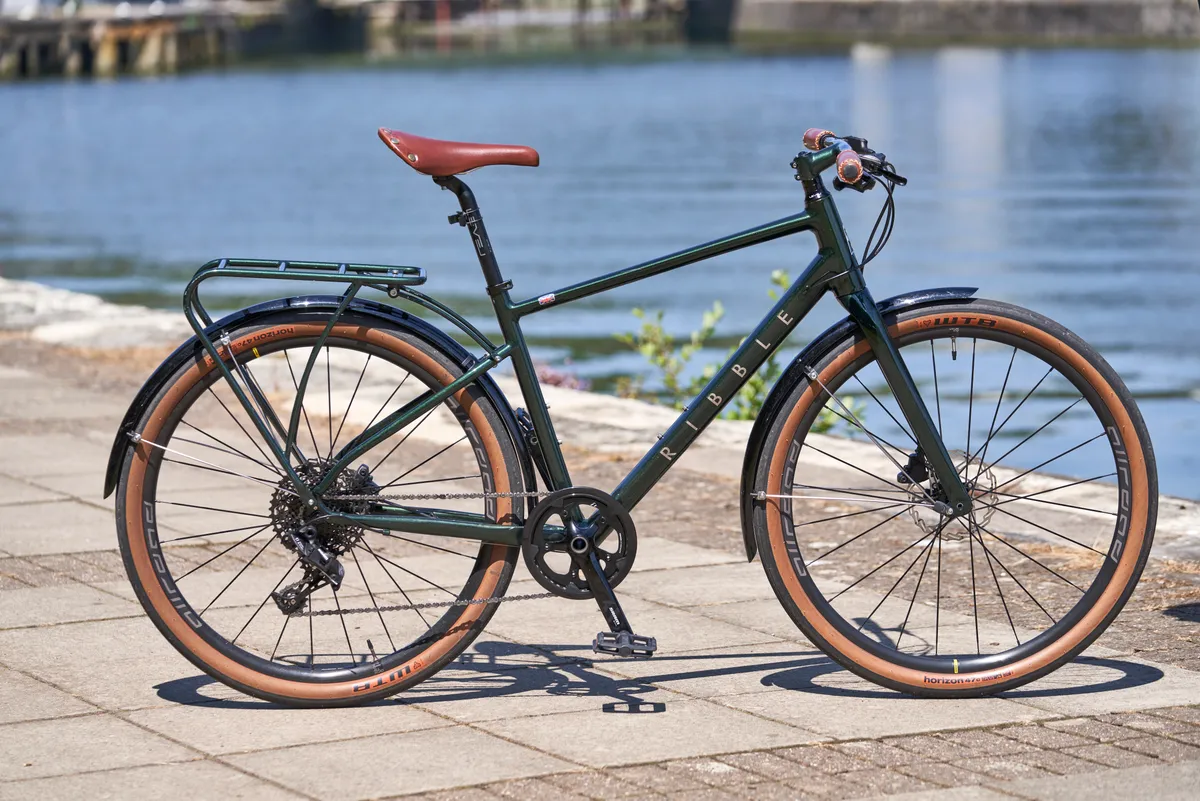
Commuter hybrid bikes have 700c, 650b or 26in wheel sizes, with 700c being the most popular.
Although hybrid bikes tend to have the same-size wheels as road bikes, robustness and comfort are prioritised over speed, so they typically have significantly wider tyres that are heavier and incorporate a more pronounced tread pattern.
Hybrid bike tyres typically start at 30-plus millimetres wide and go up into the high 40s. If you go much wider than this, increased rolling resistance can make for slow progress.
Common hybrid bike tyre sizes
Here's an overview of common hybrid bike tyre sizes for 700c wheels.
| 700c wheels | |
|---|---|
| ETRTO | Dimensions |
| 30-622 | 700×30c |
| 32–622 | 700×32c |
| 35-622 | 700x35c |
| 38-622 | 700x38c |
| 40-622 | 700x40c |
How does rim width affect tyre size?
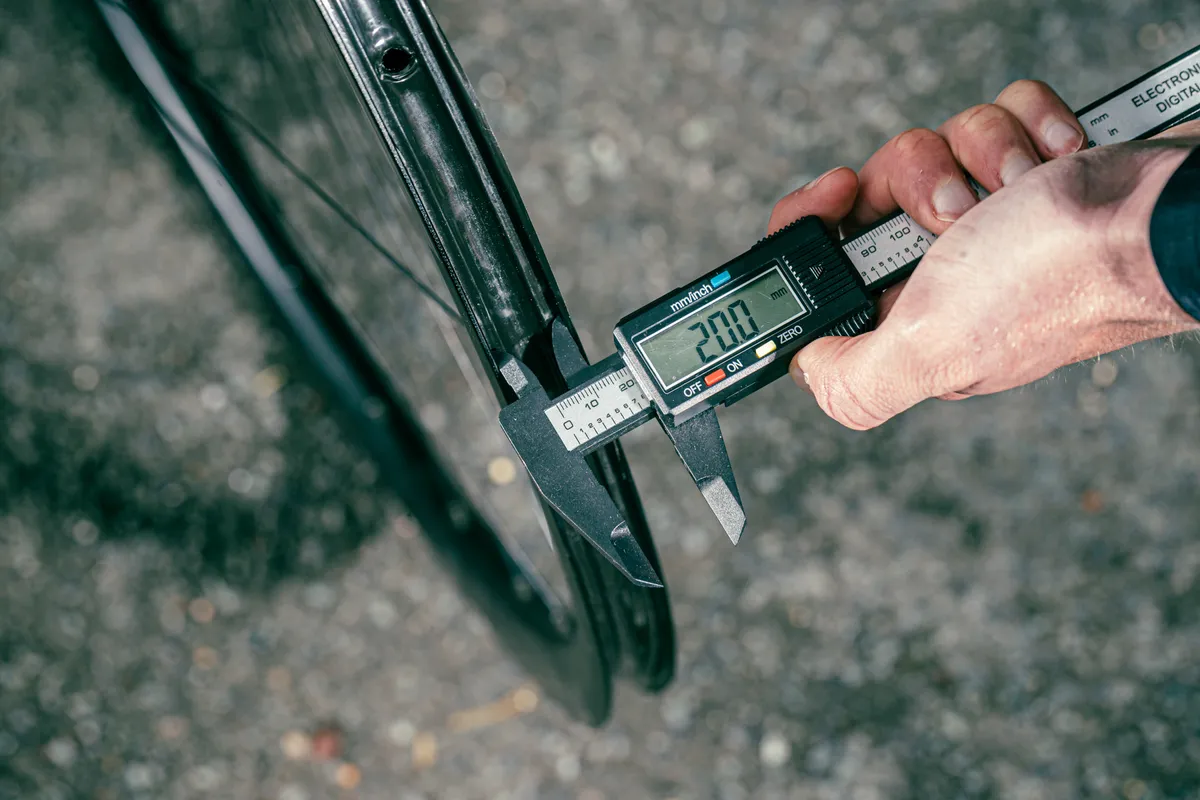
Although we’ve talked a lot about tyre width, this is only the tyre’s nominal width (i.e. what the manufacturer has stated, rather than the actual width when measured).
A tyre’s actual width will be different when mounted on a wheel. There are two reasons for this:
- First, when inflated, a tyre may plump up wider than its stated width, due to variations in manufacturing tolerances
- Second, the tyre represents only around three-quarters of the circumference of the wheel/tyre combination, the rest is determined by the rim bed
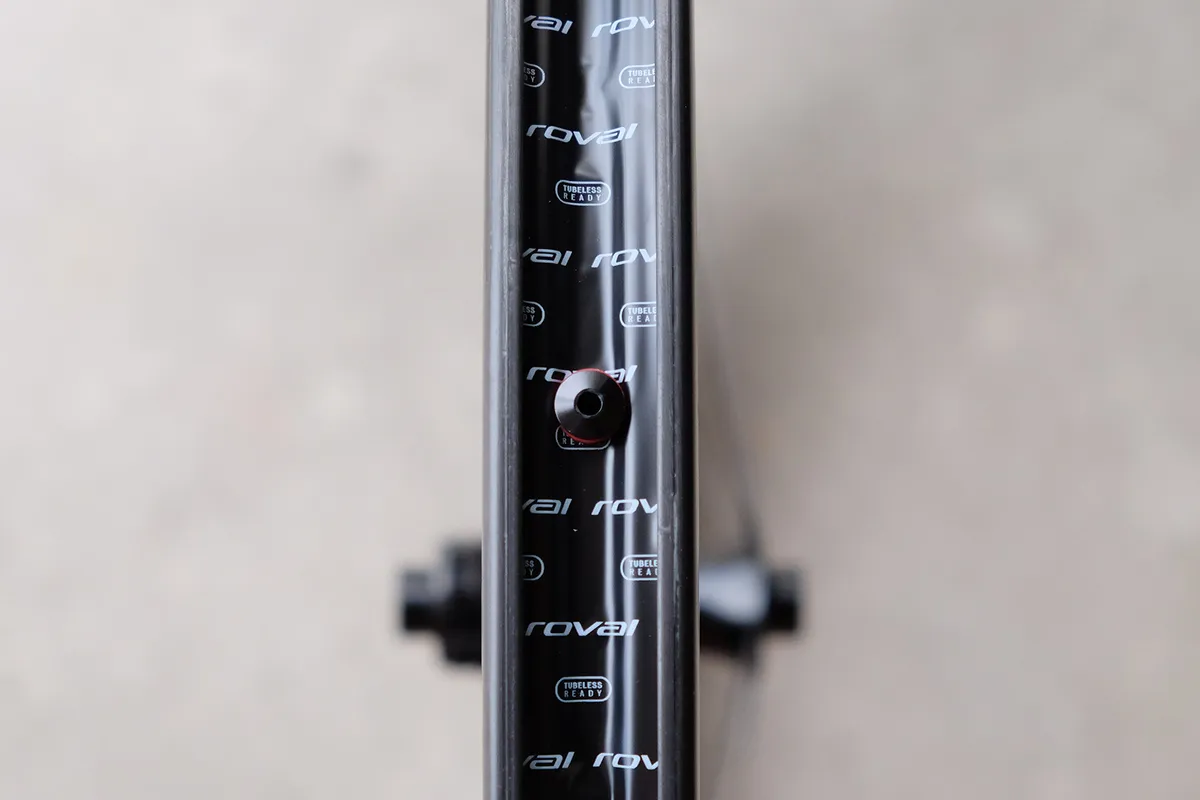
Wheel rims are getting wider both for road bikes and mountain bikes. So, whereas 17mm used to be a fairly standard road bike rim width, many modern road bike wheels have rims with internal widths of well over 20mm.
The Zipp 303 Firecrest wheel, for example, has an internal rim width of 25mm. That adds significantly to the width of the mounted tyre, so a nominally 28mm Michelin Power tyre measured up at 30.9mm wide in our test of the wheelset.
Among the advantages of wider rims, the extra volume of the tyre means it can be run at lower pressure for a more comfortable and possibly faster ride, without any weight penalty. On the downside, you may have clearance issues in your bike frame if a tyre measures up significantly more than the stated width.
